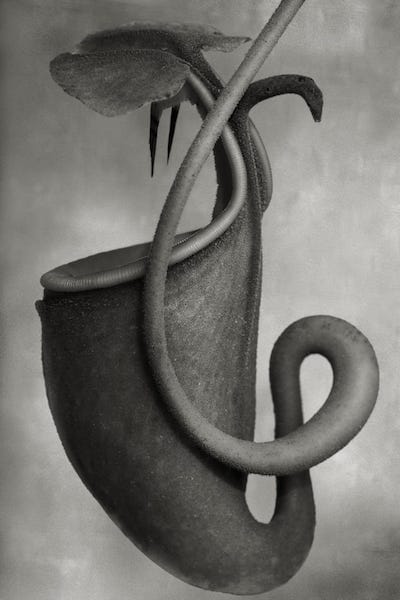At first glance, these intricately structured plants seem demure in nature, almost coy. Leaning forward they beckon and invite. They extend themselves seductively. Highly evolved in the deadly art of attraction, they paralyze, shock, crush, and trap their victims that range from insects, spiders, worms, tadpoles, lizards and small rats.
What these plants have in common with all other plants is the desire to reproduce, to ensure survival. In a world divided into terms of active and passive, we tend to think of plants as passive, non-aggressive forms of life. Approximately 100 million years ago, evolution took these plants down a different path blurring the line that separates the vegetable from the animal kingdom. As they foraged for a diet high in protein, eating insects emerged as a brilliant evolutionary strategy – a miracle of purpose!
These plants deploy an astonishing array of devices to lure protein-rich insects closer. The transparent hood of a Cobra Lily is designed to retain and reflect light specifically to draw the insects’ attention. Tiny hairs in the Venus Fly Trap signal when a visitor enters the claw-like appendage which will then snap shut, paralyzing, and crushing the victim. Luring prey with an intoxicating scent, Pitcher plants’ external hairs grow at an upward angle conducting insects toward the top to a slippery lip where lost in transports of ecstasy they fall like drunks and drown inside the trap. Sundews have long tentacles that glisten with a sticky mucilage that curl around the struggling fly that lands.
The poetic sensibility of nature seems to hover somewhere between paradise and tragedy. In these flesh-eating plants, we find a sinister beauty. Evolution has taught these carnivorous plants how to make the best of the conditions they grow in, honoring the darker more mysterious side of nature.

